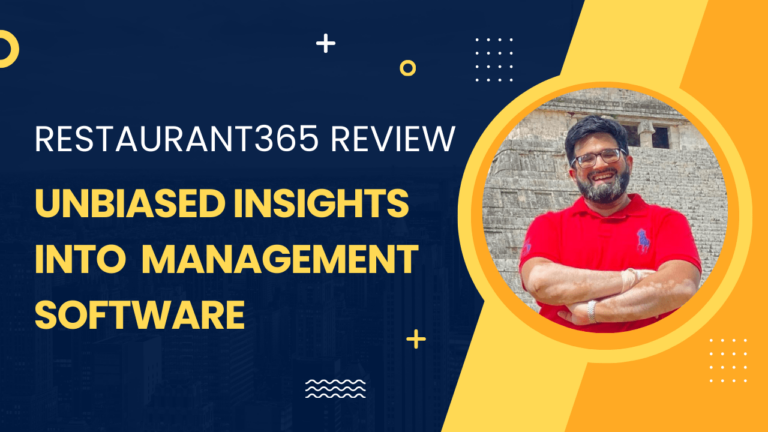Best Human Resource Software for Small Business in 2024
As a small business owner, you’re likely wearing multiple hats, and one of those might be heading up your own human resource department. You need to manage your team efficiently while complying with labor laws and tax regulations.
Defining Core HR Functions
When you’re piecing together the HR puzzle, it’s crucial to consider the core functions that’ll keep your organization humming along. Payroll and tax compliance are the heavy hitters. Get this sorted, and you’ve cleared a significant hurdle in HR management.
Next, you’ll want to zoom in on employee management – tracking attendance, managing personal details, and maintaining records. It’s not the flashiest part of your job, but it’s the lifeblood of keeping things straight.
Consider how the right software can provide reporting and analytics to make your life easier. Numbers can tell you a lot about your business’s health, so you need tools that can pull up those reports without a hassle.
Lastly, time and activity tracking isn’t just about clocking work hours. It’s about understanding productivity and making sure your crew is on the right track. Spotting trends can aid in better decision-making for your team’s workflow.
Key Features of HR Software
When scouting for HR software for your small business, make sure it’s packed with features that streamline your HR processes and enhance overall workforce management.
Applicant Tracking and Recruitment
You’ll love how smooth hiring becomes when applicant tracking and recruitment tools are part of your HR software suite. They help you post job listings, sort resumes, schedule interviews, and conduct background checks efficiently.
Onboarding and Offboarding Processes
Easy onboarding ensures new hires integrate swiftly with your team, while offboarding features help manage the exit process when someone leaves. Look for automated task lists and document management features to save you valuable time.
Performance Management Tools
With performance management tools, you can keep a close tab on your team’s growth and progress. These often include setting objectives, scheduling reviews, and providing feedback—all centralized in one place.
Time Tracking and Attendance Management
Time tracking and attendance features are all about accuracy and compliance. They ensure employees’ hours are logged correctly and help manage leaves and absences without the usual headaches.
Benefits Administration and Management
Managing employee benefits doesn’t have to be a nightmare. Look for HR software that simplifies enrolling in plans, tracking eligibility, and other aspects of benefits management.
Payroll Processing and Support
The best HR systems make payroll processing a breeze. They handle calculations, tax deductions, and ensure your employees get paid on time, also providing necessary support when complexities arise.
Employee Self-Service Portals
Empower your employees with self-service portals. They can update personal info, check pay stubs, and request time off without bogging down HR with simple tasks.
Learning Management Systems
Fuel your team’s growth with a Learning Management System (LMS). This feature assists in creating, assigning, and tracking training programs and courses, vital for upskilling your workforce.
Top HR Software Solutions for Small Businesses
Navigating HR software options can be a breeze when you know the top players tailored to small businesses. Each brings a unique blend of features aiming to streamline hiring, payroll, employee management, and more.
Exploring BambooHR
BambooHR is like your all-seeing eye into the HR world. It’s renowned for its comprehensive core HR automation, making your life easier when it comes to employee data management. BambooHR has a smooth user interface, giving you the chance to manage the employee lifecycle from hire to retire without breaking a sweat.
Benefits of Using Zenefits
Zenefits shines when it comes to benefits administration. Its platform is designed to help you effortlessly manage your employees’ benefits, alongside HR tasks. Plus, Zenefits’ mobile app lets your team access their info on the go, which is a nifty feature in the world of remote work.
Gusto for Payroll and HR
With Gusto, you get an all-in-one HR platform that’s as friendly as your neighborhood barista. It simplifies payroll, benefits, and compliance, so you can focus on the big picture. Gusto is particularly ace at ensuring your payroll runs as smoothly as your morning coffee.
Evaluating Namely for Growing Companies
Namely is a hit with companies on the grow. It merges HR, payroll, and benefits into a single package, aimed at businesses that need a little more oomph. If you crave a platform that scales with you, Namely could be your ticket.
Rippling: Integration and Automation
Think of Rippling as the Swiss Army knife of HR tech. It’s packed with features that handle everything from HR to IT. Perfect for you if you’re into seamless integration and automating your tasks to a T.
Discovering Paycor’s Offerings
Dive into Paycor and you’ll find a buffet of HR software solutions. Paycor’s designed to give small businesses like yours a leg up with its user-friendly platforms. Whether it’s recruiting or payroll, Paycor aims to have your back with strong customer service and technical support.
User Experience with Zoho People
Now, if you’re into a personalized HR experience, Zoho People is worth a look. It’s all about giving you a fuss-free way to manage your HR processes. Zoho People keeps things friendly and simple, all while providing a suite of features for hands-on employee management.
Workday and ADP Workforce Now for Scaling Up
And if you’re gearing up to play in the big leagues, Workday and ADP Workforce Now are two names to remember. These solutions are robust with advanced features, making them solid picks when your small business starts to not-so-small anymore. They’re all about helping you scale up without skipping a beat.
Integration and Customization Capabilities

When choosing the right HR software, you’ve got to think about how well it plays with your existing tools and how much you can tweak it to be your perfect fit.
Seamless Software Integrations
Picture this: your HR software smoothly talking to your accounting and project management tools without a hitch. That’s what solid integration capabilities are all about. You’ll often find that the best HR software comes with a range of pre-built integrations. For instance, Namely stands out for its ability to integrate with a wide variety of systems, ensuring you can connect all your tools under one roof.
APIs are another thing to keep an eye on. The right HR platform offers robust APIs, so your tech team can build custom connections, making sure nothing gets left in a silo.
Customizing to Fit Your Business Needs
Now, let’s talk about tailoring the software to your vibes. Whether you’re looking to tweak the approval flows or dashboards, customization is key.
The goal is to automate the mundane, like time-off requests and performance reviews, with automated workflows. It means you get more time to focus on the cool stuff, like growing your team. Software like BambooHR and Rippling gives you those customization options that let you craft an employee experience as unique as your business.
Cost Considerations for HR Software

When you’re in the market for HR software for your small business, the price tag can make or break your decision. Let’s dive into what makes some options more affordable and how pricing models can affect your budget.
Evaluating Affordable Options
Before you pull out your company credit card, it’s critical to identify what “affordable” really means for your business. Affordable doesn’t just mean the lowest base price; it’s about the value you get for your money. For example, Gusto offers a starting base price of $40.00 monthly plus $6.00 per user. It’s a payroll solution that rolls in additional benefits handling, potentially saving you money elsewhere.
- Microsoft 365: Starts at $6.00/user/month, giving you basic HR functions like email and collaboration tools.
- Other HR software: Can hover around $39/month plus $5/employee/month, which sometimes includes a suite of features that might mean more bang for your buck.
Understanding Pricing Models
The pricing models of HR software can be as diverse as the tools they offer. You’ll commonly encounter:
- Per user per month: A structure where you pay for each user accessing the system each month.
- Flat rate: A single fixed fee for a set package of features, regardless of the number of users.
- Add-ons: Extra fees for additional features or services on top of the base package.
| Pricing Model | Example Cost |
|---|---|
| Per user/month | $3.50 to $7 per employee |
| Flat rate | $25 to $299 per month |
| Add-ons | Varies based on the service |
Knowing how these models work will steer you towards a payroll solution that suits your budget without compromising on essential HR functions.
Effective HR Software Deployment

Deploying HR software in your small business isn’t just about picking the right tool; it’s also about rolling it out in a way that ensures it’s embraced by your team. You’ll want to keep in mind the employee experience and engagement, cost-effectiveness, and the ease with which your organization can adopt the new system.
Implementing Your HR Software Successfully
First off, choose an implementation methodology that works for you—whether it’s a phased rollout, department by department, or a ‘big bang’ approach. Think about these factors:
- Cost: Understand the expense tied to your deployment strategy. Budget for training and any downtime that may occur during the transition.
- Ease of Use: If the software isn’t user-friendly, it’ll be tough to get your team onboard. Test drive it first to ensure it’s intuitive.
Here’s a checklist to help guide you:
- Define your goals and expected outcomes.
- Communicate with stakeholders to align expectations and responsibilities.
- Ensure your IT infrastructure supports the new software.
- Plan for data migration, and ideally, have a clean-up exercise of your current data.
- Schedule training sessions and provide resources for self-help.
Ensuring User Adoption and Engagement
Once your HR software is up and running, your job’s not done yet. You need to get your team to actually use it—and use it well. Here’s how:
Training:
- Provide comprehensive training tailored to different roles within your business.
- Follow up with refresher courses to ensure knowledge retention.
Support:
- Have a support system in place, whether it’s an in-house expert or reliable customer service from your provider.
Feedback Loop:
- Encourage your employees to share their experiences and suggestions.
- Actively work on feedback to improve their user experience.
Remember, your employees are more likely to engage with the software when they feel it enhances their day-to-day work and overall employee experience.
Additional Resources and Support

When you’re knee-deep in HR software for your small business, knowing where to find help can turn a headache into a high five. You’ve got questions, these resources are your go-to for answers and support.
Leveraging Customer and Technical Support
Look, you’re not alone when technical gremlins hit your HR system. Customer and technical support are basically your techy BFFs. Hit them up via phone, email, or even live chat. Their expertise can guide you to smooth operations, often 24/7, so don’t sweat the small stuff—or the big, for that matter.
Learning Through FAQs and Documentation
Your HR software is bound to come with a treasure trove of FAQs and documentation. It’s like having a wise guru on demand. Dive into those resources for quick self-help—think of it as your digital HR handbook. And hey, the search feature is a lifesaver for finding exactly what you need, pronto.
Finding the Right Benefits Broker
Choosing a benefits broker doesn’t have to be a wild goose chase. You want someone who’s got your back with the right mix of plans and price points. They should offer robust support and deep expertise in weaving through the maze of healthcare, retirement, and more. Your HR software might have recommendations, so peek at their partners’ list.






